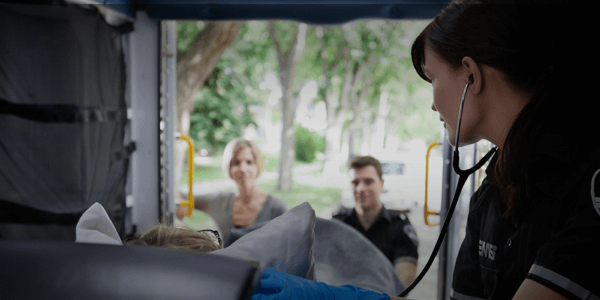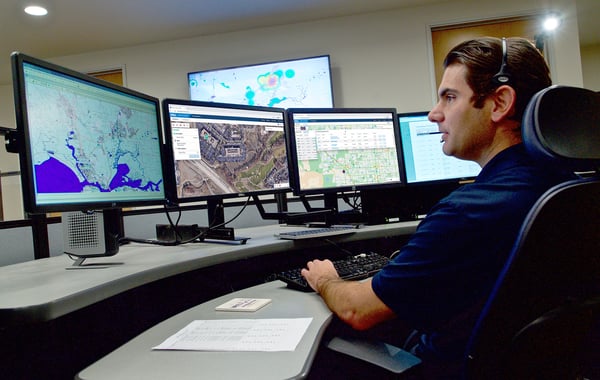Meet the New ZOLL Dispatch and ZOLL Respond CAD Solution
EMS and Hospital Collaboration
ZOLL SUMMIT Speaker Series Question: As an EMS professional how would you rate the transition of care and flow of information from the ambulance to the hospital?

ZOLL SUMMIT Speaker Series
Question: As an EMS professional how would you rate the transition of care and flow of information from the ambulance to the hospital?
We can all agree that EMS and Hospital stakeholders have a similar mission: “to deliver high-quality care to the patients they serve.” However, does that automatically equate to a seamless transition? Think back on your last ten trips to the Emergency Room.
What actually happens? What goes well or what could have gone better?
Unfortunately, these transitions do not always go smoothly. Ineffective care transition processes lead to adverse events and higher hospital readmission rates and costs. An even more frightening statistic in found that nearly 80% of serious medical errors involve miscommunication during the hand-off between medical providers. The federal government has taken notice. To reduce both readmission rates and adverse events, hospitals must improve the effectiveness of transitions of care in which they play a role.
Hey, I get it - healthcare is a very complex industry and many times it can be hard to navigate. The course from admission to discharge can take unexpected turns for the patients and even for the seasoned healthcare providers. For patients, it can be difficult to remove obstacles related to accessing or receiving treatment. For health professionals, communication is usually one of the largest gaps as physicians, nurses, and allied health providers try to advocate for the patients as they travel through the system.
Complex problems usually require complex solutions. Those solutions take time to mature and manifest into better experiences for the providers and the patients they serve every day. How do we make the road easier to travel on? The timing for this conversation is perfect. We are an aging nation and sooner or later, all of us are going to have to navigate the hills, turns, and busy intersections of healthcare together.
Looking for solutions
Sometimes the status quo is more dangerous than the unknown. – Joshua Ishmael
One answer could be aimed at leveraging hospital c-suite executives to empower their front-line leadership in the emergency departments. WHY? The ED doors never close, and they have an obligation to treat anyone requesting emergency care.
Race, gender, creed or ability to pay cannot be factored into the equation. Regardless of patient acuity and census levels on the inpatient units – the lights in the ED are always on. The ED doors are important and worth mentioning because crossing that threshold represents the first impression of healthcare – or does it?

Does the patient journey into this convoluted healthcare continuum always start here?
I strongly believe the answer is no!
In our health system, around 22% of patients enter the ED via municipal fire-based EMS or private ambulance systems. That makes EMS most health system’s # 1 referral source and a very important external stakeholder. Unsurprisingly, improved quality, reduced costs, and patient satisfaction are quickly becoming important conversations in many healthcare circles.
We are beginning to ask questions like:
What if hospital executives empowered their ED staff and other critical services lines within the health system to think outside the box?
What could happen if they invited EMS to the table on a more regular basis?
What if EMS was charged with helping engineer a solution to make the first patient hand-off more seamless?
Could a better understanding of pre-hospital professionals and increased EMS engagement make a difference in the way healthcare is delivered?
A calculated risk
In mid-2015, after carefully evaluating the advantages and possible disadvantages, our health system decided to hire an EMS Coordinator. This individual was tasked with developing a long-term strategic plan in 2016. The EMS Coordinator was also given a blank slate which fostered a great working environment where endless creativity could thrive. The mission was to be a community force.
The coordinator endeavored to improve on the quality of services hospitals provide. This was done by building stronger relationships within our communities and with our hospital-based clients in a concerted effort to achieve superior patient outcomes.
The core values centered on:
Advocacy: for patients, EMS professionals, nursing practice and our local community members.
Collaboration: from within and outside the hospitals to develop best practices.
Integrity: to act in a manner that is honest and fair on behalf of all our stakeholders.
Innovation: continually striving for better solutions through technology and evidence-based practice.
A large focus is also built around “4 Pillars of Success” which included: access, education, public awareness, and research/quality improvement. It didn’t take long for the position to prove its value. Indeed, our EMS coordinator has been widely successful and in December of 2015, the health system got the approval to hire a second full-time employee.

Conclusion:
There are three strategies that can and should be used to bring EMS and hospitals together for the common good: consensus decision making, quality collaboratives, and strong leadership.
Consensus decision making is powerful because using this tactic means the group must be committed to finding solutions that everyone actively supports. Consensus is neither compromise nor unanimity. It aims to go further by weaving together everyone’s best ideas – a process that surprisingly yields very creative solutions that inspire the entire group.
Quality collaboratives are widely endorsed as a potentially effective method for translating and spreading best practices for time-sensitive emergencies like heart attack and stroke. They are being used in many countries around the globe to achieve rapid improvements in healthcare. Leadership and culture change collectively help drive the positive effects that appear when the two entities come together to produce a greater result than each would achieve on their own. Synergy between EMS and hospitals results in better patient interactions and improved outcomes.
The success between hospitals and EMS has the potential to grow exponentially when collaboration is diverse, participation is authentic, and conflicts can be managed. Conflict between EMS and Hospitals doesn’t have to hold us back. In the right environment, organizations can learn to manage conflict in ways that energize and sustain the work of both parties. The stakeholders are now pulling in the same direction. Innovative technology has EMS and hospitals more connected than ever before. When this happens our patients and communities win. They have a better patient experience, their mortality and morbidity decrease, and they spend less time in the hospital.
“The stimulus for growth is to be uncomfortable – just ask a lobster!”
- Dr. Abraham Twerski
Want to know more? Register for Joshua’s’ SUMMIT session: “EMS and Hospital Collaboration: A Kentucky Success Story.”
Related Posts
Collect More Revenue Faster: The Pivotal Role of Clear, Concise, and Complete Documentation
ZOLL Pulse Blog
Subscribe to our blog and receive quality content that makes your job as an EMS & fire, hospital, or AR professional easier.
ZOLL Pulse Blog
Subscribe to our blog and receive quality content that makes your job as an EMS, fire, hospital, or AR professional easier.






